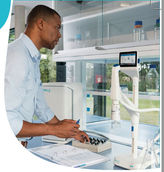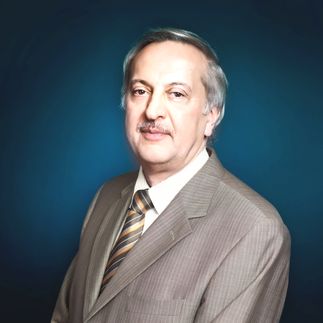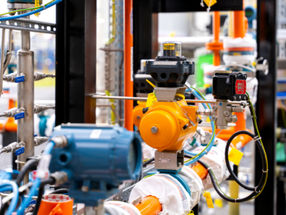Bayer MaterialScience acquires worldwide marketing and usage rights for the DURFLEX track superstructure system
Advertisement
Bayer MaterialScience AG has acquired the worldwide marketing and usage rights for the DURFLEX® track superstructure system from Hyperion Verwaltung GmbH, Frankfurt/Main, Germany. The two companies have signed an agreement to this effect. Financial details have not been disclosed. The superstructure system stabilizes the ballast stones under rail tracks, thus enabling more cost-effective railroad operation in the long term. It is based on the flexible Bayflex® polyurethane foam system from Bayer MaterialScience. DURFLEX® was developed by Hyperion, drawing on the track-building expertise of its partner Frenzel-Bau of Freden, Germany, and in close cooperation with Bayer MaterialScience. It can be used for building new sections of track and for upgrading existing stretches.
“This innovative track construction system can be used to cut operating costs anywhere in the world,” says Peter Vanacker, head of the polyurethanes segment and a member of the Executive Committee of Bayer MaterialScience. “In extending the marketing concept for this system, we want to continue our successful partnership with Hyperion, Frenzel-Bau and the other companies involved, but are also looking forward to establishing new agreements with German and international track construction companies and network operators.” Bayer MaterialScience plans to step up its investments in technology, for example, in the form of additional rail vehicles for installing DURFLEX®.
These vehicles, purpose-designed by Hennecke GmbH, use a mixing head to feed the liquid polyurethane system directly into the cavities between the ballast stones, where it expands to completely fill the spaces. “This flexible treatment permanently prevents the stones from shifting as a result of the dynamic forces generated when a train passes over the track. It also eliminates the usual tamping work and consequent disruptions to rail services. Stabilizing the track bed in this way also means that structure-borne noise is effectively insulated at the point of origin,” explains Jörg Frenzel, Managing Director of FRENZEL-BAU. “In this way, the system offers both economic and environmental benefits for track and train operators.”
After highly successful trials on two test sections in Germany (one in Berlin’s urban transport network and one on the main line between Hamburg and Hannover), the system was used for the first time on two sections of track in Asia at the end of 2009. These sections are shortly to be taken into regular operation for rail traffic. Extensive tests on the sections of track already treated with DURFLEX® have yielded very promising results that bring the widespread use of this technology one step closer.
Most read news
Other news from the department business & finance
These products might interest you

Milli-Q® Services / MyMilli-Q™ by Merck
Services & Support for Water Purification Systems
Quality Care, Delivered. In Person & Online

Good Weighing Practice by Mettler-Toledo
Your Concrete Weighing Quality Assurance Plan
GWP Verification service

Get the chemical industry in your inbox
By submitting this form you agree that LUMITOS AG will send you the newsletter(s) selected above by email. Your data will not be passed on to third parties. Your data will be stored and processed in accordance with our data protection regulations. LUMITOS may contact you by email for the purpose of advertising or market and opinion surveys. You can revoke your consent at any time without giving reasons to LUMITOS AG, Ernst-Augustin-Str. 2, 12489 Berlin, Germany or by e-mail at revoke@lumitos.com with effect for the future. In addition, each email contains a link to unsubscribe from the corresponding newsletter.





























































